

We may earn revenue from the products available on this page and participate in affiliate programs. Learn More ›
If you want your yard to be a welcoming place for birds, there are a few things you should do, including making your windows bird-safe, keeping bird feeders clean, and regularly cleaning bird baths. Clean bird baths provide feathered friends with access to safe water they can drink or use to bathe themselves. When left uncleaned, the water in a bird bath can pose health risks to birds and attract mosquitoes to your yard.
Accumulated dirt and algae could leave stains in a bird bath that you might not be able to remove, so it is important to clean your bird bath regularly. That can be about two or three times a week—or more frequently if the water looks discolored between cleanings. Read on to learn how to clean a bird bath so you can keep your yard a safe haven for birds in the neighborhood.
Before You Begin
When thinking about how to clean a bird bath, it’s essential to use cleaning products that are safe for birds. Bleach can poison birds if too much residue is left behind after cleaning a bird bath, and synthetic cleaners or soaps can remove the natural oils from a bird’s feathers. For this reason, the best way to clean bird baths is to use a natural solution of water and vinegar, as described below.
Diluted vinegar is normally sufficient for removing algae, dirt, and other gunk from even an old bird bath. If you feel like you need a little extra cleaning power to tackle a tough stain, try using baking soda.
Tools & Materials
Bobvila.com may earn a commission from purchases made through these links.
5 Steps to Cleaning a Bird Bath
Birds can carry diseases, so it is always a good idea to wear a pair of rubber gloves when handling or cleaning areas where birds congregate.
Step 1: Pour out the water and remove any loose debris.
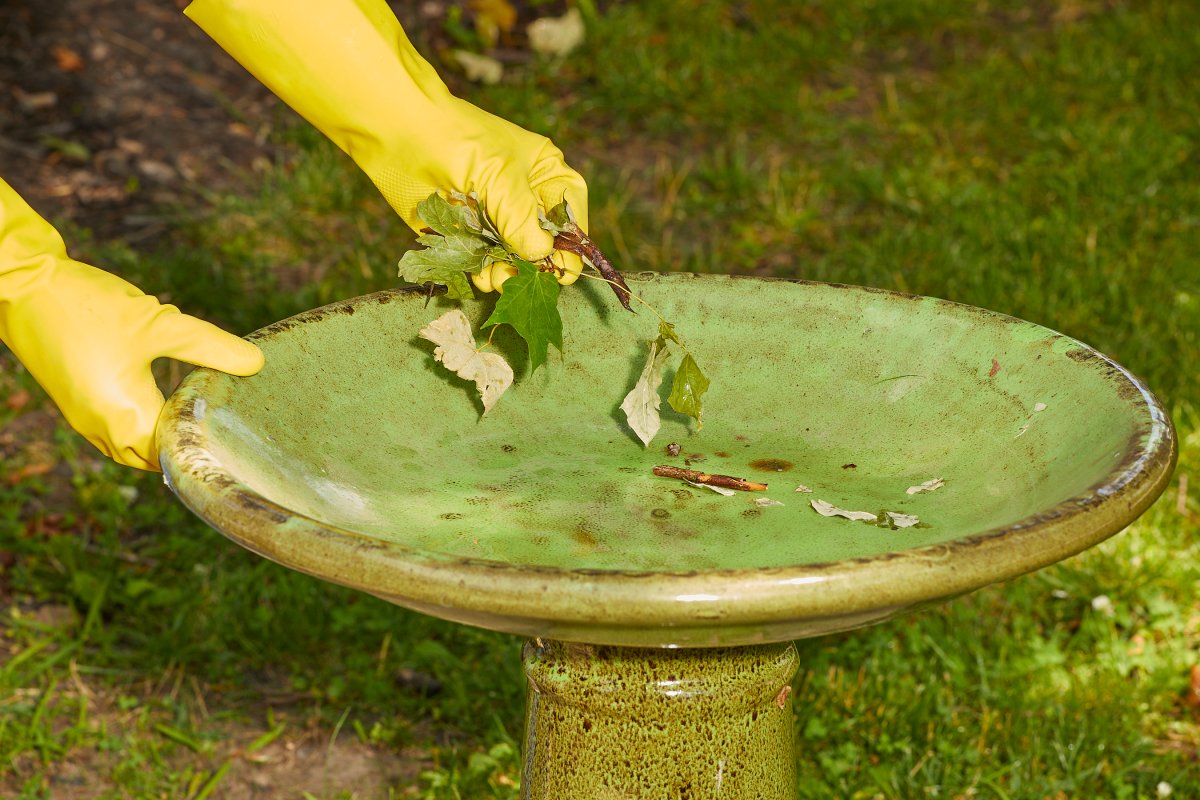
Pour out any water that is in the bird bath.
The dirty bird bath water can be safely poured onto grass. However, avoid dumping it all in one area of the lawn where water pools because birds may use the puddle as a bird bath. After pouring out the water, remove any feathers, leaves, or other debris that may be stuck on the basin.
Step 2: Prepare a vinegar and water cleaning solution.
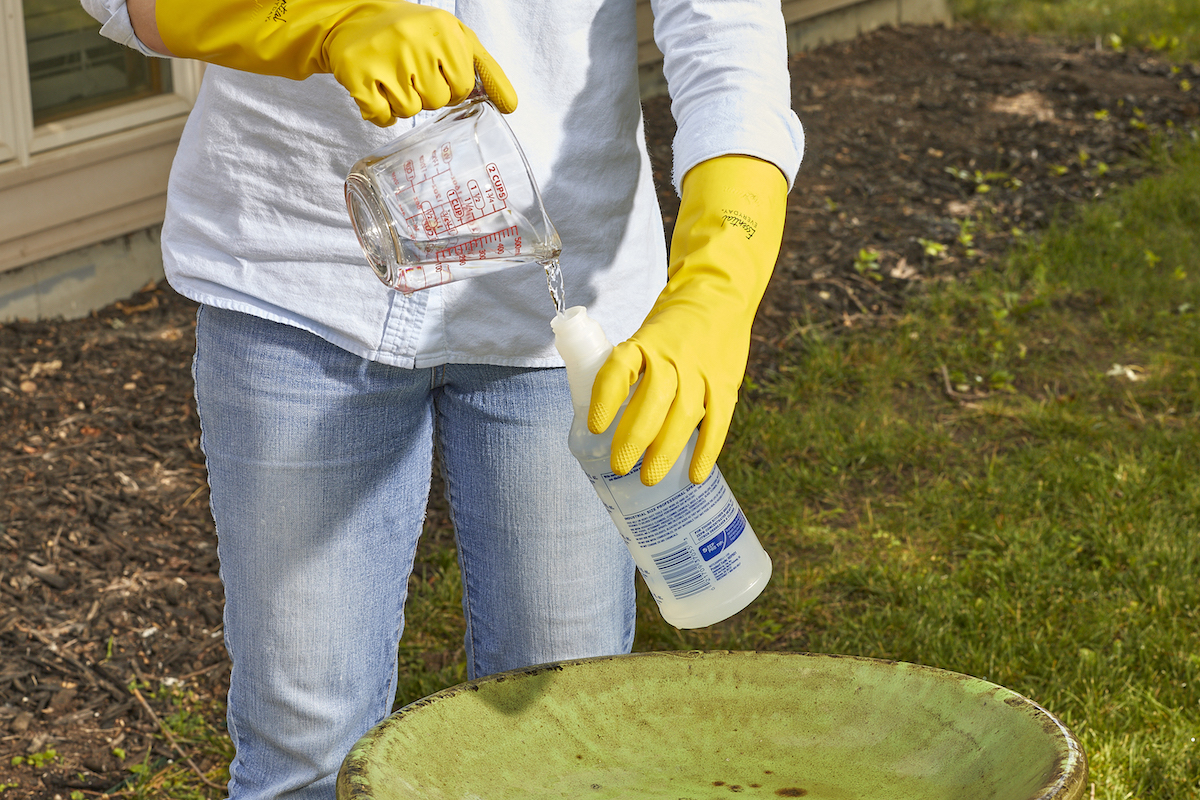
Whether you’re cleaning a concrete bird bath or one made of plastic or ceramic, a vinegar-and-water solution should offer safe and effective cleaning power. To clean a bath with vinegar, simply mix one part distilled white vinegar with nine parts water. Combining the two liquids in a spray bottle can make it easier to use for multiple cleaning sessions.
Step 3: Use a scrub brush to clean the bird bath.
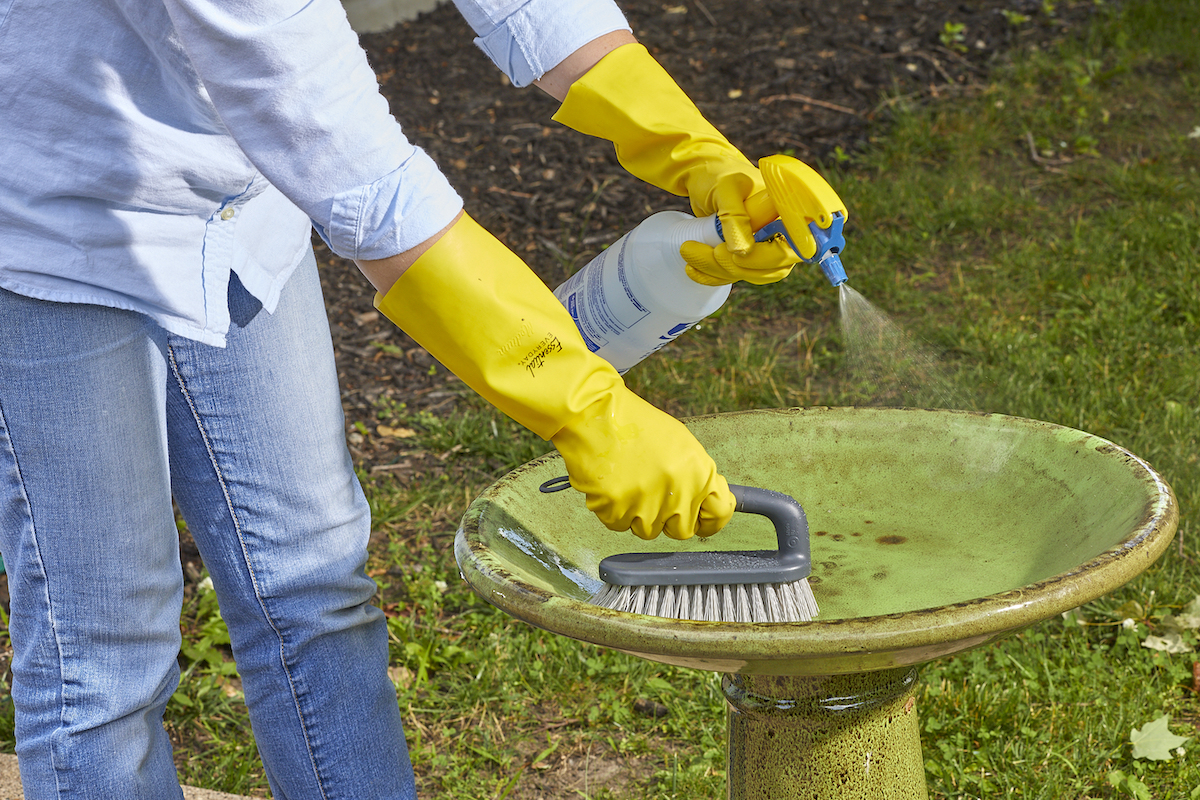
After mixing the cleaning solution, spray it all over the basin. Use a heavy-duty scrub brush to remove any bird droppings, algae, dirt, or other debris from the basin. Take care to clean all areas of the basin, including the rim and exterior.
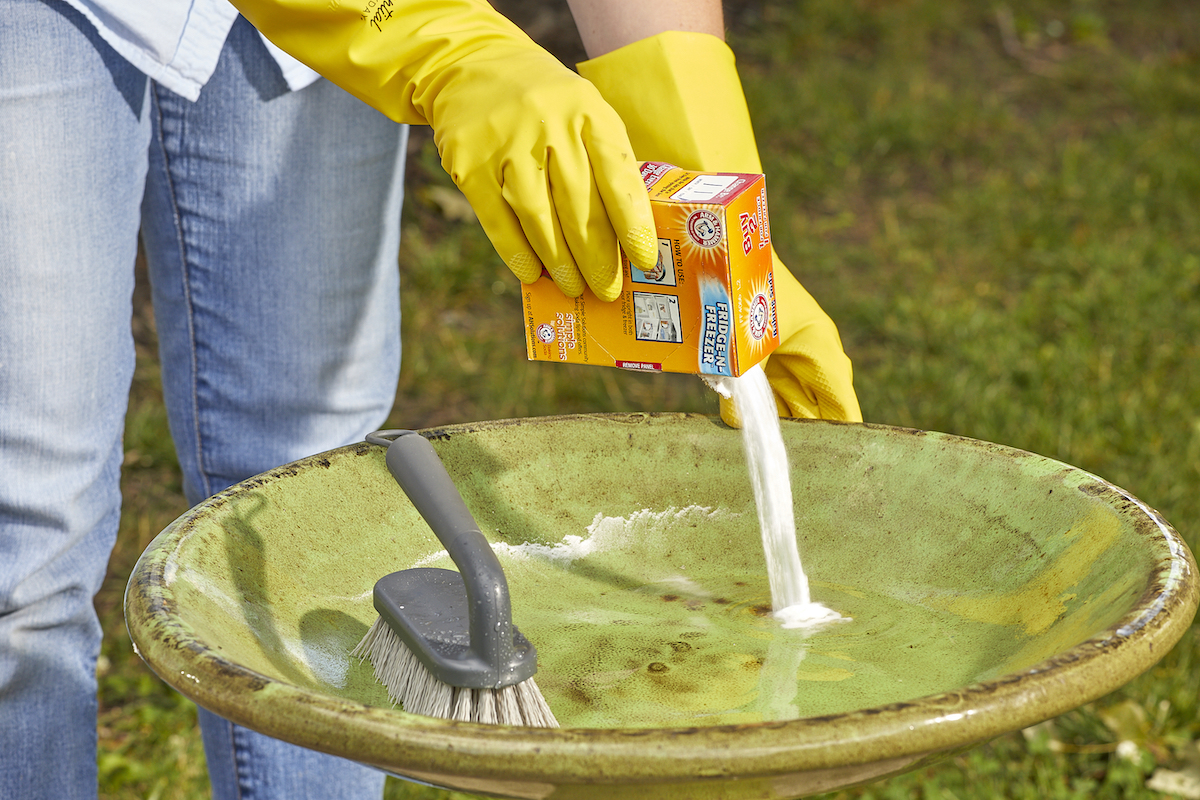
For stubborn spots, spray on the vinegar solution and allow it to sit for 10 to 15 minutes before returning to scrub. As mentioned above, baking soda is also bird-safe and can be used to help remove stubborn stains.
Step 4: Rinse and dry the basin.
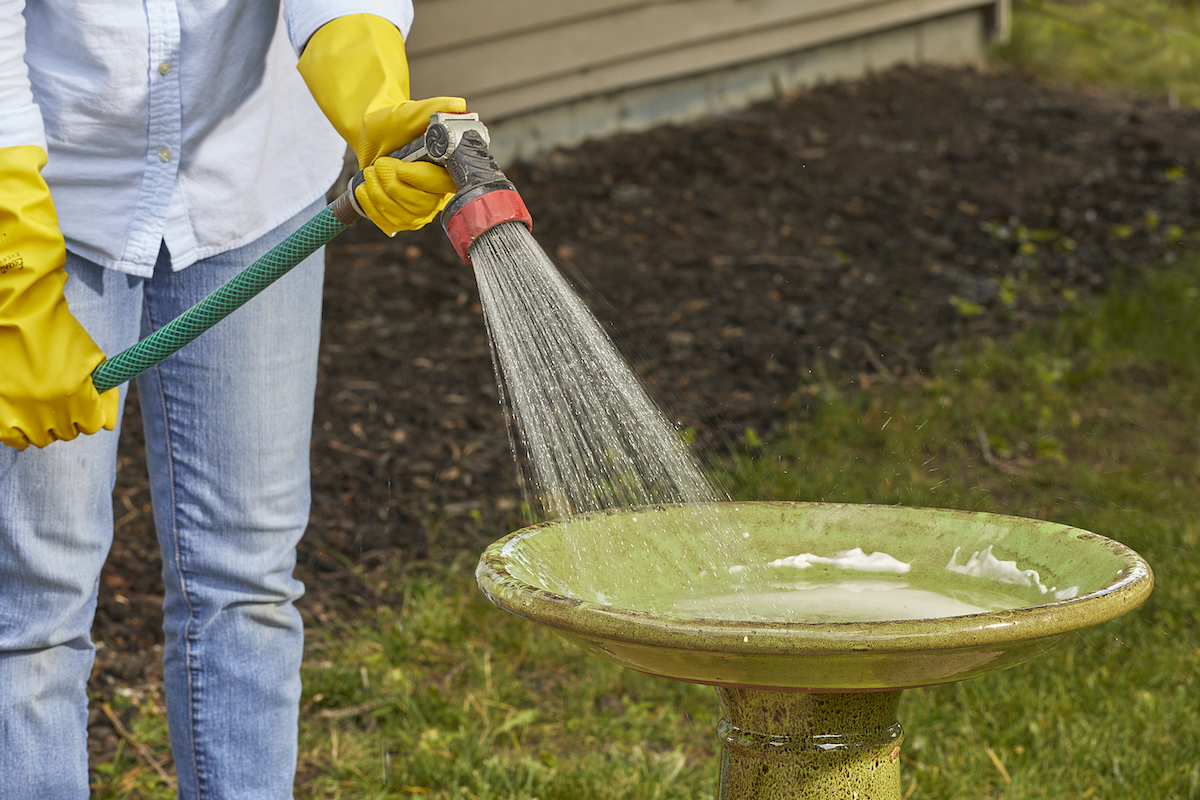
Once the basin is clean, rinse it thoroughly using clean water. You want to remove any remaining debris and as much of the vinegar residue as possible. The bird bath should also dry fully before it is refilled with water. This will help ensure that the vinegar evaporates to provide a clean space for birds to bathe and drink.
Step 5: Add 2 inches of water to the basin for the birds.
When the basin has dried fully, you can refill it with water for the birds. Most birds prefer shallow water, so it’s recommended to only add about 2 inches of fresh water to the bird bath.
How to Keep a Bird Bath Clean
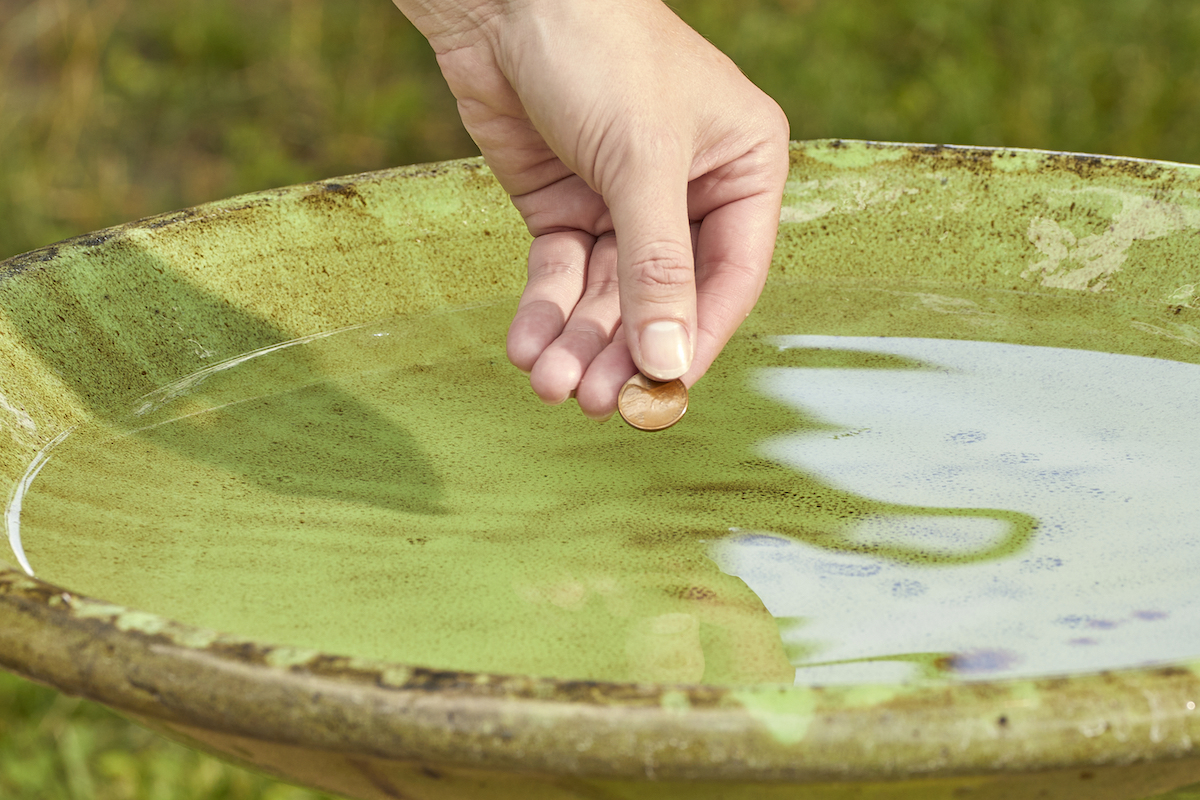
Learning how to keep a bird bath clean can reduce the amount of time future deep cleanings will require. The following are a few guidelines that can help you keep your bird bath clean:
- Add a bubbler: Bubblers like the Mademax solar birdbath fountain pump keep the water in a bird bath circulating, which can help prevent algae or bacteria growth. A bird bath bubbler or water agitator is also less likely to attract mosquitoes, which prefer to lay their eggs in stagnant water.
- Seal the bird bath: Use a clear nontoxic sealant, like the Gorilla waterproof patch and seal, to seal the basin and make it easier to clean. Be sure to follow the manufacturer’s directions and let the product cure fully before adding water to avoid posing any potential health risks to the birds.
- Place the birdbath in a shaded location: Algae will thrive and water will evaporate much quicker in direct sunlight. Keeping the bird bath in a shady spot will minimize both issues.
- Add a wildlife-safe enzyme to the water: Bird-safe enzyme cleaners like Birdbath & Fountain Protector can help break down contaminants and leave the water in a bird bath cleaner.
- Dump old water before adding clean water: Any time you go to add some fresh water to the bird bath, always dump out the old water first. This will remove more of the germs and bacteria than simply topping off the water.
- Put a copper penny in the bottom of the basin: Copper can minimize the growth of algae, so adding a copper penny minted prior to 1982 (pennies dated 1983 to the present are mostly zinc with a thin copper plating) can help slow bird bath algae growth.
- Add a heater: While a bird bath heater won’t help keep the basin clean, it will keep the water from freezing even during the colder winter months.
